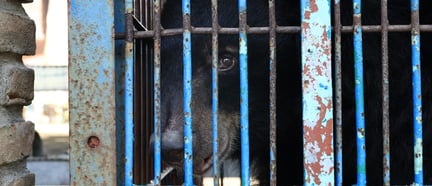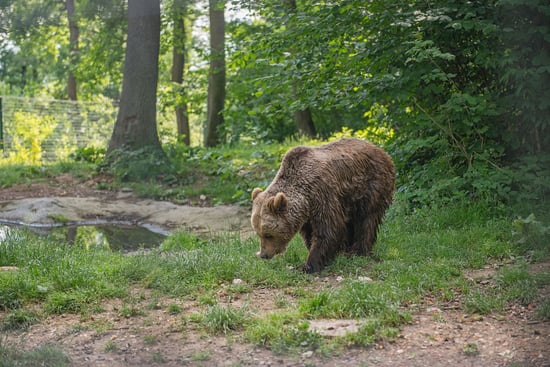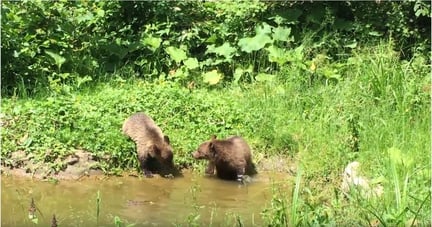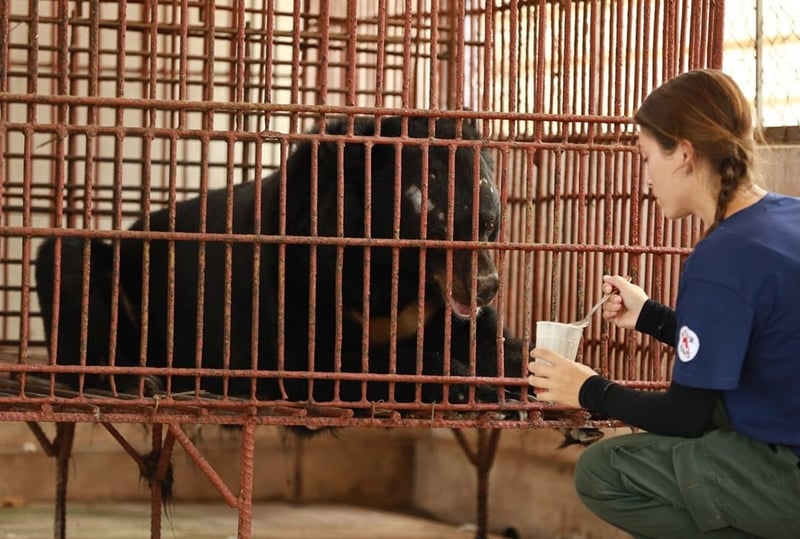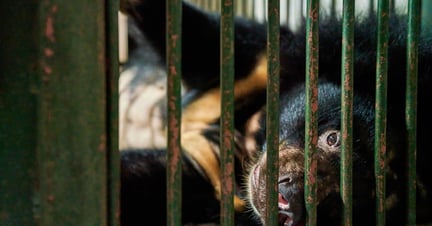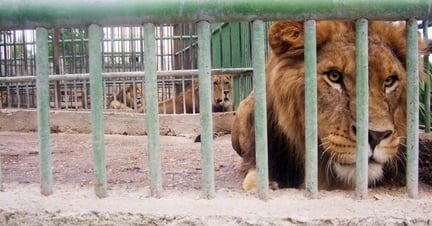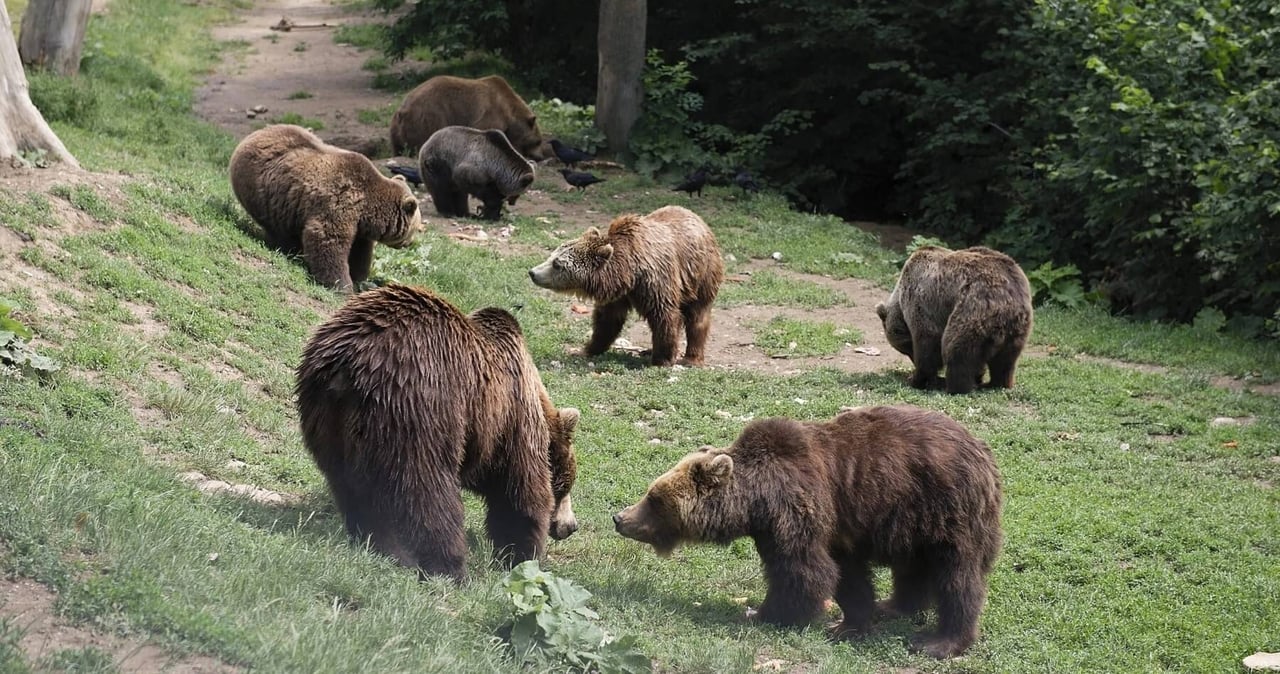
Bear Facts
Common name: Bear
Scientific name: Ursidae
Distribution: Asia, Europe, The Americas
Learn some fun facts about Asiatic black bears, sloth bears, sun bears and brown bears and take our quiz to find out which bear you are!
There are eight species of bears including the Asiatic black bear, sloth bear, sun bear, and brown bear. They are widely distributed around the world.
Bears are omnivorous – meaning they eat basically everything – with an excellent sense of smell, even rivalling that of dogs.
Bears are highly intelligent animals. They can count, use tools, solve problems and communicate with a range of vocalisations and complex facial expressions. Bears are typically solitary animals except during mating season and mothers when nursing their young. Despite their size and heavy build, bears are good runners, climbers, and swimmers.
Over the winter, bears dig dens or use shelters such as caves and logs to go into a deep sleep during winter periods, referred to as “torpor”. Contrary to popular belief, bears are not true hibernators.
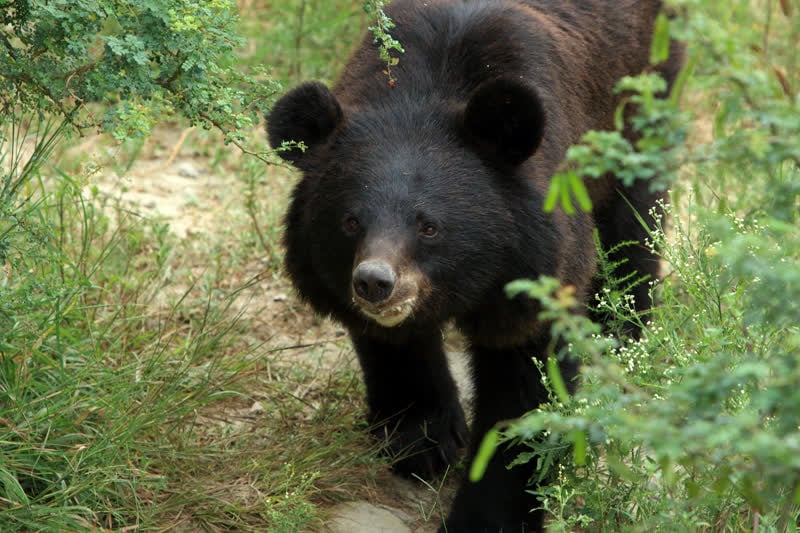
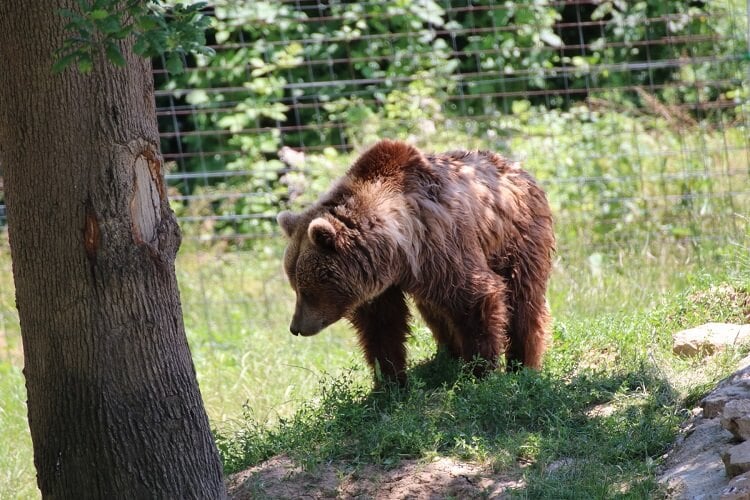
Asiatic black bear
The Asiatic black bear, also called the Asian black bear, or moon bear, is a member of the black bear family. It’s found in the Himalayas, northern parts of the Indian subcontinent, Southeast Asia, and parts of eastern Asia including northeastern China, the Korean Peninsula and Japan.
The Asiatic black bear has black fur, a light brown muzzle, and a distinct white patch on the chest, which is sometimes V-shaped.
Asiatic black bears are classed as “vulnerable” to extinction by the IUCN (Red List of Endangered Species); and as Appendix I under the Convention on International Trade in Endangered Species of Wild Flora and Fauna (CITES).
Wild populations of Asiatic black bears have been declining by 30% over the last 30 years and are projected to decline by more than 30% over the next 30 years due to hunting and habitat loss.
European brown bear
The brown bear is Europe’s largest terrestrial mammal. The total population for continental Europe is estimated at between 10,000 and 11,000 bears.
The species was once distributed across the whole of the European continent, but has long been extinct in most of western Europe and has recently become extinct in a number of other areas.
The European brown bear’s habitat is forest, however large tracts of forested areas are rapidly vanishing. Human settlement and centuries of hunting have already eliminated brown bear populations from 50-75% of their historic range, and continue to deplete remaining populations.

What problems do bears face?
Bears used in traditional medicine
Bile is a fluid secreted by the liver and stored in the gall bladder of all mammals. It is a necessary part of the digestive process. The gallbladder and bile of bears are highly valued for use in traditional Asian medicine.
Extracted bile can be sold ‘fresh’ in small glass vials, dried in an oven to form powders, and/ or mixed with other ingredients to make pills or other products.
Bear bile is extracted in intolerably cruel and inhumane ways, often by people with no veterinary qualifications and little concern for animal protection.
Extracting bile from live bears cause severe distress and pain. Open wounds from extractions can lead to infections, chronic illness and death.
Bears in the bear bile industry often moan and rock due to extreme anxiety. Many have broken teeth from biting on the bars of their cages.
Our researchers identified 32 herbal alternatives to bear bile already included in traditional medicine compendiums.
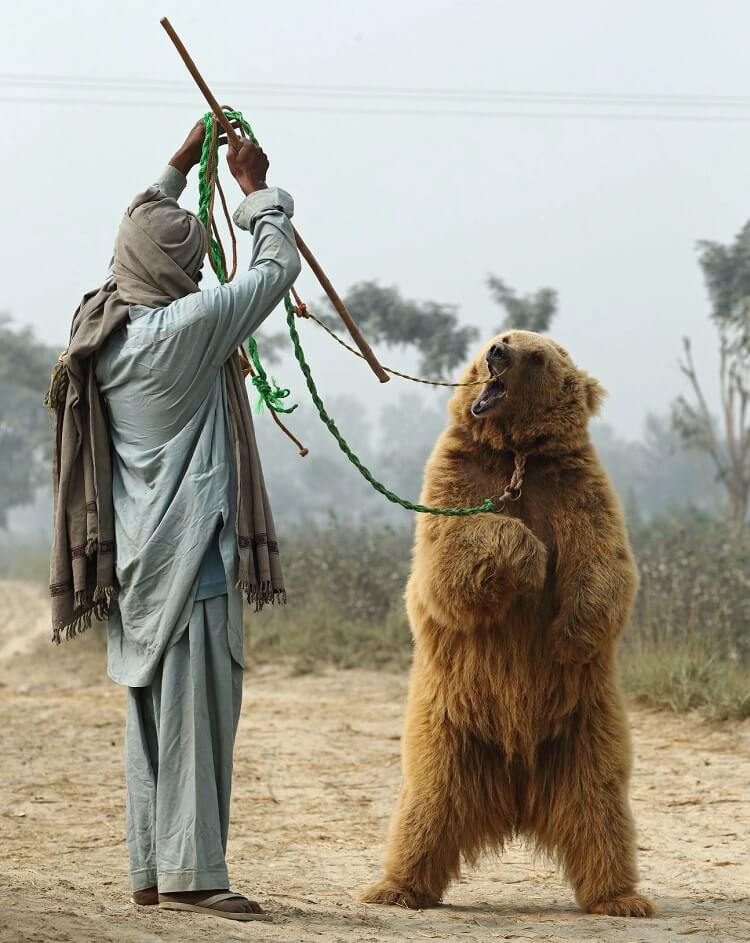
Bears used for entertainment
Many bears have been taken from the wild at a very young age, destined for a life of captivity and torture to entertain crowds. To steal the cubs, poachers often shoot the mother bears – depleting the breeding adults and the next generation of wild bears.
In order to train bears to dance, they’re forced to stand on metallic plates heated to unbearable temperatures by hot coals underneath. The trainer controls the heat level and plays a musical instrument to make the bear lift their feet, as if “dancing”, in an attempt to relieve their burning paws. This causes a lifetime of physical and psychological pain. Some dancing bears are offered to baiting event organisers to fight dogs, often influential landlords who own the fighting dogs, – which are seen as status symbols.
At a baiting event, the bear is tied with a neck rope to restrict their movement. This only allows them to rear up and turn around, but not to run or hide. They’ll then be set upon by several dogs at once and have no choice but to try to defend themselves – without sharp teeth or claws. The wounds, terror, and pain inflicted on these bears is horrifying and heartbreaking.
Bears used for bear baiting very rarely make it past the age of eight. When one bear dies, the cycle begins again and another is taken from the wild.

How we are helping protect bears from bile farming
Together, with our supporters’ help, we can create lasting change to prevent the severe pain and psychological distress suffered by bears in the bear bile industry.
We are committed to ending the exploitation of bears in the bear bile industry, and to protect wild bears from a lifetime of suffering in captivity. Our work includes:
- Joining with partners, including governments, global bodies, local partners and individuals, to stop bears being exploited and to create lasting change;
- Promoting better welfare for captive bears, while we move to end the bear bile industry for good;
- Seeking laws, policies, monitoring and enforcement to ensure that captive bears are given space to move, provided with richer environments and are protected from all forms of bile extraction and exploitation;
- Raising awareness of alternatives to bear bile, including herbal and synthetic products, which are readily available, affordable and effective;
- Working with local organisations to urge governments to live up to their international commitments to protect bears and other wild animals.
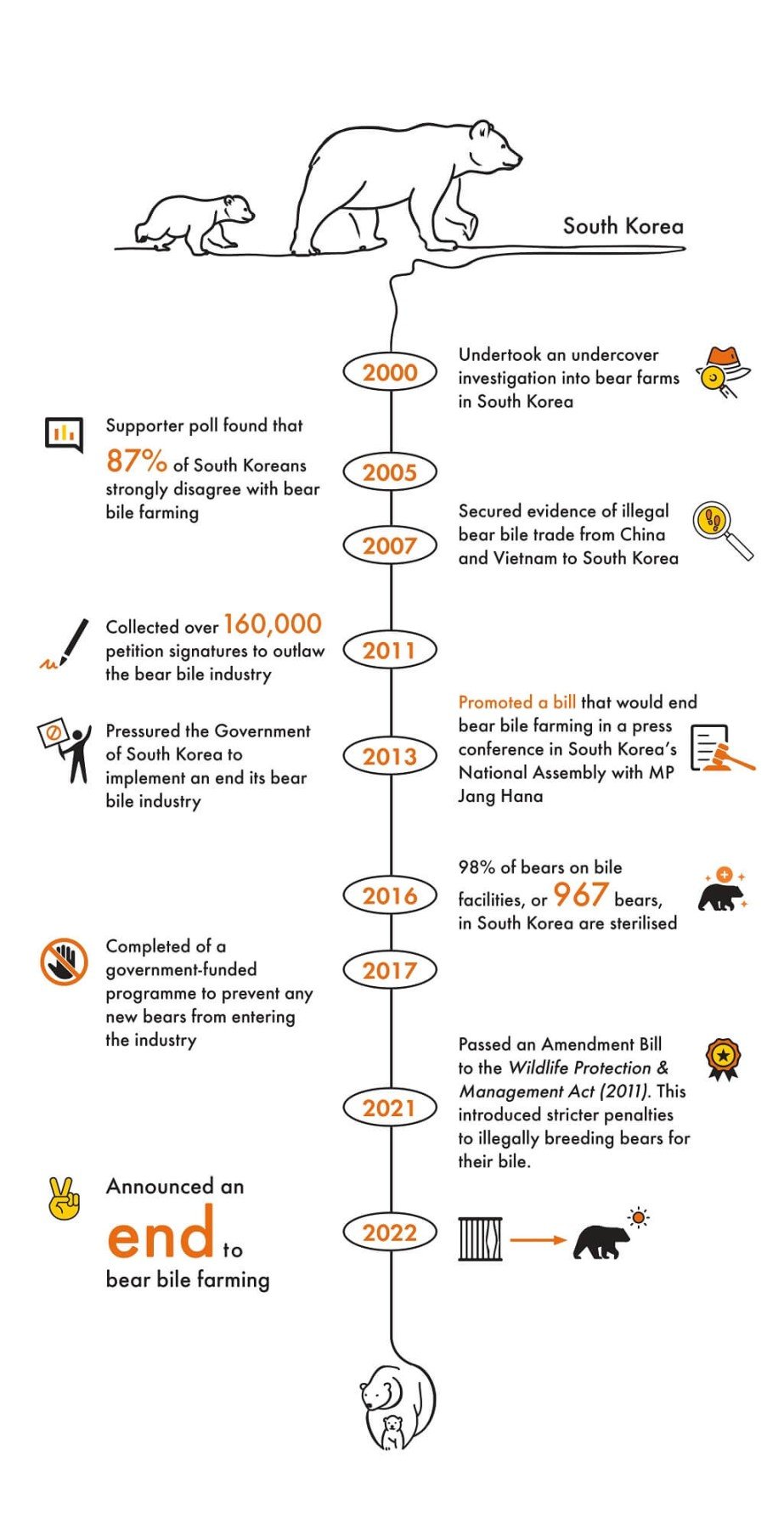
How we are helping protect bears from baiting and dancing
In 1997, World Animal Protection joined forces with the Bioresource Research Centre (BRC) in Pakistan to bring a permanent end to the tradition of using bears for entertainment. Our early partnership with BRC focused on investigative work and in more recent years on public awareness and the bear sanctuary.
The key message we are communicating to key decision makers and bear owners, is that the practice of keeping bears for entertainment is cruel, culturally unacceptable and illegal.
This campaign will eradicate the culture of using bears for entertainment by:
- Ensuring the continual decrease in baiting events held. During 2020, no more than 15 events were attempted, with no public event going ahead and less than five private events held;
- Ensuring legislative reform to make keeping bears illegal, tougher penalties are given to offenders, the number of dancing bears is capped and an authority is responsible for implementation;
- Negotiating with kalandars (bear owners) the surrender of their bears in return for alternative livelihoods – so they don’t return to the practice in future;
- Welcoming newly surrendered bears used for baiting or dancing at Balkasar sanctuary and providing resident bears with the highest level of care;
- Supporting BRC in developing and implementing a sustainability plan so that they can become self-sufficient in the long-term.
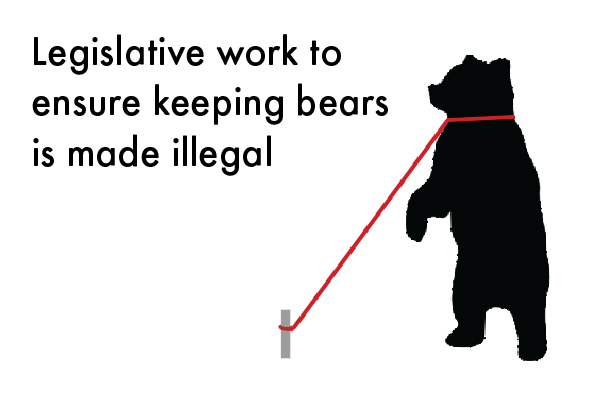
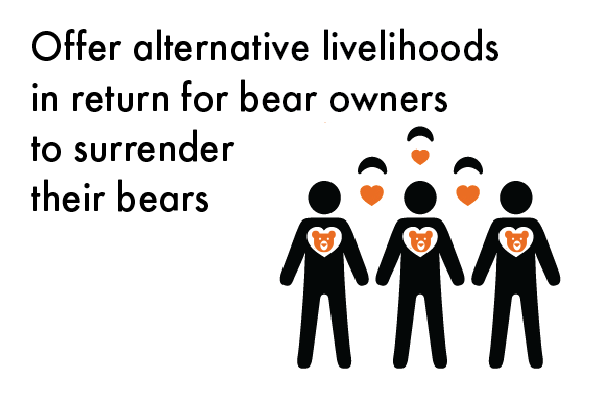
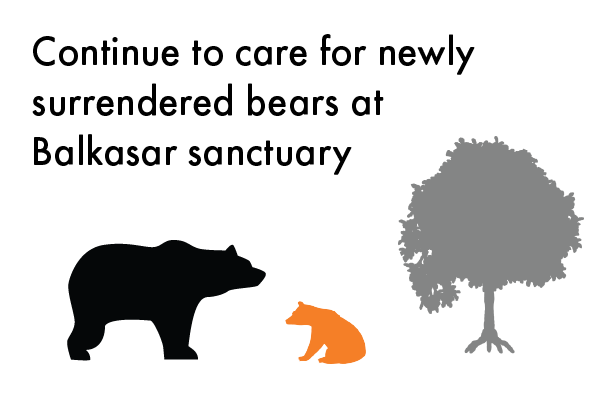

Show your love of bears
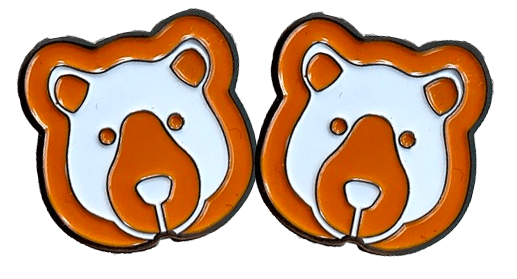
From caring for bears in sanctuaries to working with our partners to end bear dancing in Greece, Turkey, India and Nepal, you continue to move the world to protect bears.
Show your love for these furry friends with one of our free, limited edition bear pins.
Perfect for blazers, bags and coats, 150 lucky supporters like you have the chance to show off your love of bears.
How you can help bears
You can help end the cruel use of bears for human “entertainment” or as traditional medicine ingredients.
Please donate today, help ensure bears have lives worth living and help us work together to keep wild animals in the wild, where they belong.
Donate today
Cruelly exploiting wild animals for traditional medicine is indefensible
Wildlife trade
Every year, thousands of animals are bred in captivity or snatched from the wild to fuel the traditional medicine market.
Donate to protect bears
Your support can help to cover food and medical costs that protect bears at our partner sanctuaries.
Freeing bears from captivity
We worked in Romania to free bears that are being kept in captivity.
In the news
-
Bear bile farming nears its end: Celebrating an honour...
News
Vietnam is on the verge of completely ending the cruel practice of bear bile farming. This significant achievement...
-
Bear rescue marks the closure of a bear bile...
News
After 20 years in a tiny cage, the Asiatic black bear will finally be able to feel the...
-
Asiatic black bear breaks free from captivity after two...
News
Thank you for being part of the reason bears in captivity have a second chance at life. Na,...
-
South Africa’s lion farming industry is fuelling the illegal...
News
A new report by World Animal Protection details the horror of South Africa’s inhumane lion farming industry and...
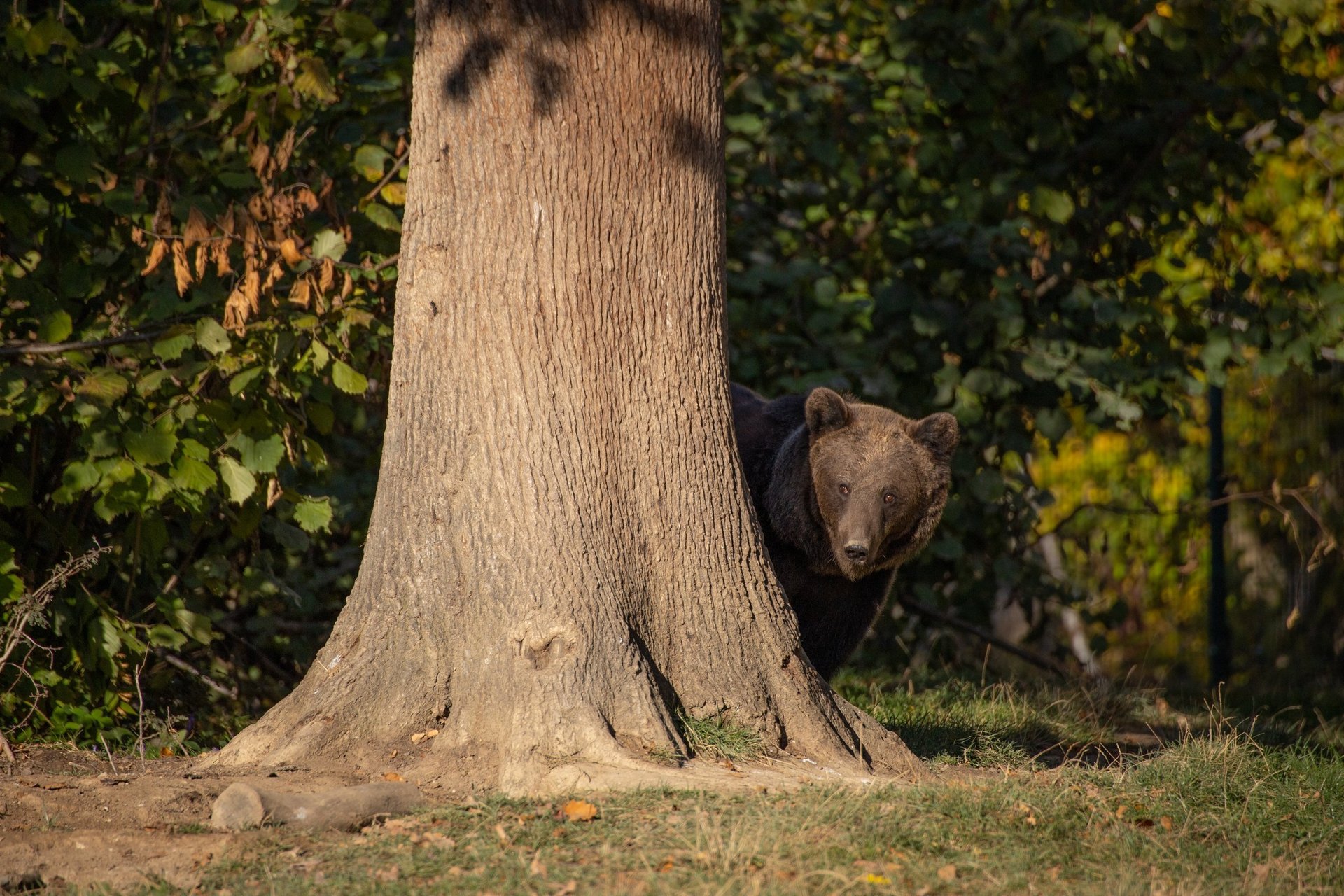
Keep up to date
Join thousands of animal lovers fighting to protect wildlife and give farmed animals good lives. Sign up now to receive emails with all the ways you can help.
Sign up
